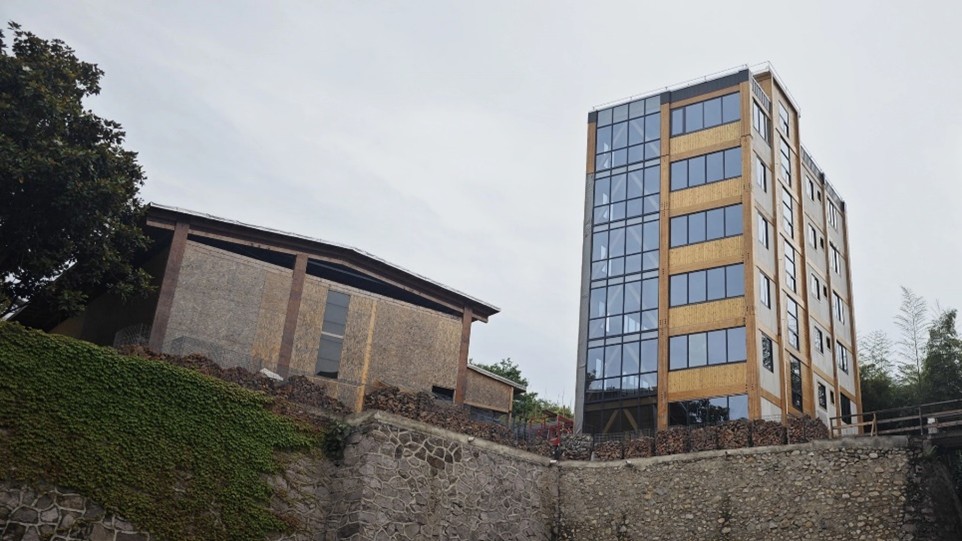
The Next Frontier: Structural Engineered Bamboo
There is increasing demand for renewable, high-performance building materials, and engineered bamboo is emerging globally as a viable solution.
Across three days in June, I had the pleasure of participating in a novel program of events in three Australian cities to showcase, discuss and learn about the attributes of bamboo as a building material.
The focus was on establishing engineered bamboo as a mainstream product in the Australian market, in much the same way that compressed laminated timber was over a decade ago. Structural engineered bamboo has the potential to complement sustainably sourced timber where supply struggles to meet demand and, therefore, represents an opportunity for the timber industry to diversify and mitigate risk.
Next Frontier Summit
The Bamboo Society of Australia (BSA) hosted the Next Frontier Summit with ICC-ES as the primary supporter, uniting global expertise and local opportunity across the full lifecycle of bamboo, from propagation and engineered products to policy and climate solutions.
“Australia has the climate, the land and the legacy of bamboo farming—but we’ve never brought it all together,” said BSA President Jennifer Snyders. “This Summit is about changing that—and showing the world that bamboo has a place in our future economy, our buildings and our land use strategy.”
The event brought together landowners, growers, researchers, producers, architects, engineers, designers, builders, policymakers, investors, developers and sustainability leaders to lay the foundations for the future of bamboo in Australia by shaping the supply chain from the ground up.
With increasing pressure on Australia’s timber industry, attendees heard from local and international leaders revolutionizing the use of structural bamboo from carbon-negative cladding to large-span construction. Bamboo is one of the world’s fastest-growing, carbon-negative and regenerative crops that can also restore degraded land, purify contaminated water, improve biodiversity and create regional industry.
I also had the opportunity to showcase ICC’s credentials in supporting and promoting innovation in construction and building products, including relevant ICC-ES Acceptance Criteria and an Evaluation Service Report.

The Benefits of Bamboo as a Building Material
There is increasing demand for renewable, high-performance building materials, and engineered bamboo is emerging globally as a viable solution.
- Bamboo has the potential to sequester significantly more carbon than timber (it absorbs ten times more carbon dioxide from the atmosphere than an equivalent acreage of trees), whilst both helping regenerate degraded land and avoiding leaving land barren when harvested.
- Maturing in just five to seven years compared to timber’s 26 to 50 years, bamboo regenerates without replanting, allowing annual harvests. Although planted as grass, when cut, bamboo is comparable to timber.
- Bamboo has relatively low water needs, is drought-resilient and its natural properties facilitate the removal of toxins from soil, effectively restoring the underlying water table to its pure state.
- The land area in Australia suitable for bamboo cultivation rivals, if not exceeds, the total agricultural area of Europe.
- In addition to its use in construction, bamboo is used in cabinetry and furniture. It is also an optimal source of sustainable alternatives to traditional fertilizers, which increase soil water retention and reduce nutrient leaching.
- Bamboo helps diversify building material supplies, where shortages and reliance on imports could exceed 40 percent of total supply during peak demand.
- In addition to its strengths as a standalone building material, bamboo can be integrated with existing timber-based products. Recent research has shown that combining bamboo with cross-laminated timber (CLT) can enhance the structural performance of CLT. Moreover, bamboo can be processed using the same manufacturing facilities as CLT, underscoring its compatibility with current production systems.
- Bamboo has a very different molecular structure to wood, which helps make it more stable in moisture and temperature changes. When made into structural engineered bamboo, this makes it around 40 percent denser than engineered wood. As such, its fire performance is better because its carbonization rate is much slower.

A Global Market for Engineered Bamboo
While the discussions at this event were around using structural engineered bamboo in Australia, it’s clear that this model can work in other parts of the world.
In the southern United States, appropriate climate conditions exist to grow native or non-invasive species. Growing native species of bamboo in countries neighboring the U.S. could create an alternative economy and income stream for rural communities in these countries to supply the U.S. market.
Learn more about the Bamboo Society of Australia, here. Learn more about ICC-ES, here.







